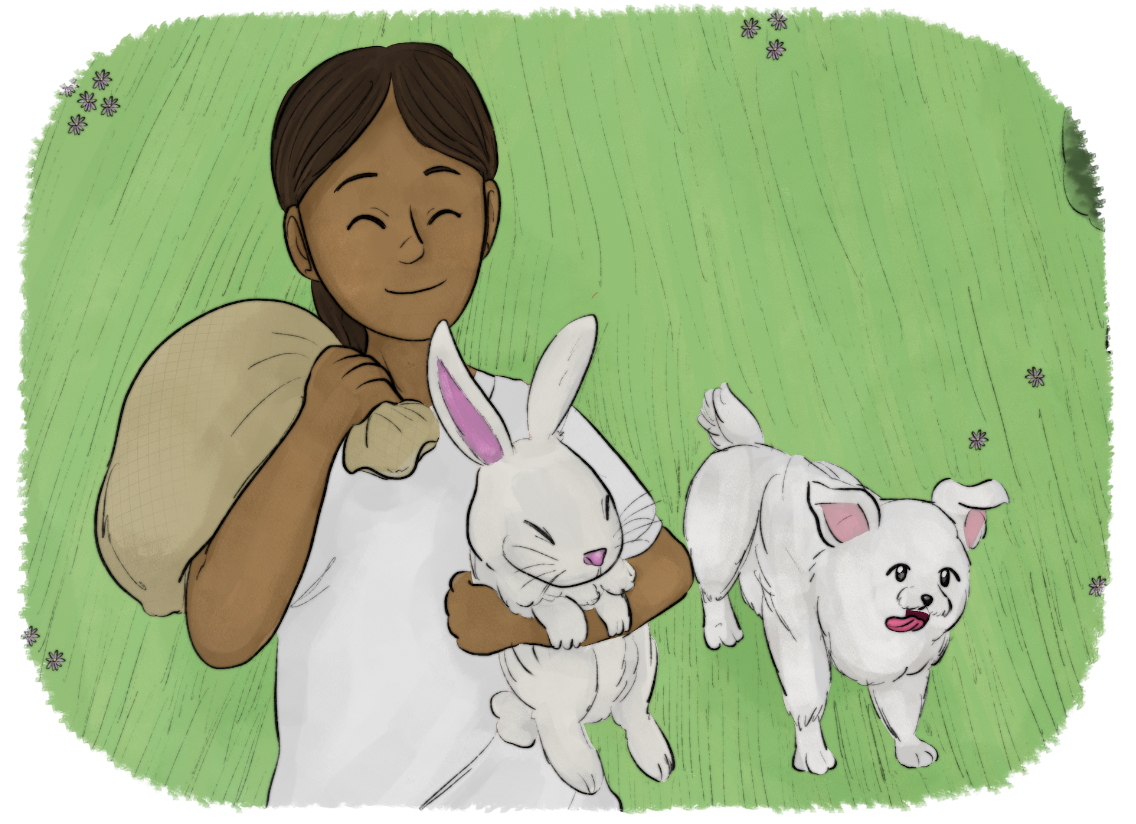Section 11.1 Small Number and the Dog, the Rabbit, and a Sack of Carrots - Classroom Guide
View the full story: Small Number and the Dog, the Rabbit, and a Sack of Carrots
Suggested Grades: 2 – 6
Subsection 11.1.1 Mathematics
- Solving a puzzle - mathematical thinking and understanding of the question and the given conditions
- Strategizing - a sequence of steps that lead to a solution under the given restrictions; following the rules of the game
- Logic - statements of the form “if… then”
Subsection 11.1.2 Mathematical Vocabulary
- small, number, a lot, near, other side, stack, so much, curly, across, cross, a bend, little, slower, picks up, jumps from rock to rock, until, the other side, big, different things, pull out, soon, box, one, slippery, carry one at the time
Subsection 11.1.3 Cultural Components
- Indigenous: Curly Hair is a Salish Woolly Dog; kinship; love; community - supporting and helping each other, sharing
- General: Growing your own food vs. buying your food in a supermarket. Different sources of energy, burning wood vs. gas or electricity. Living in a city vs. living in a rural community.
Subsection 11.1.4 Mathematical Observations (Video)
Click here to see the film (English)
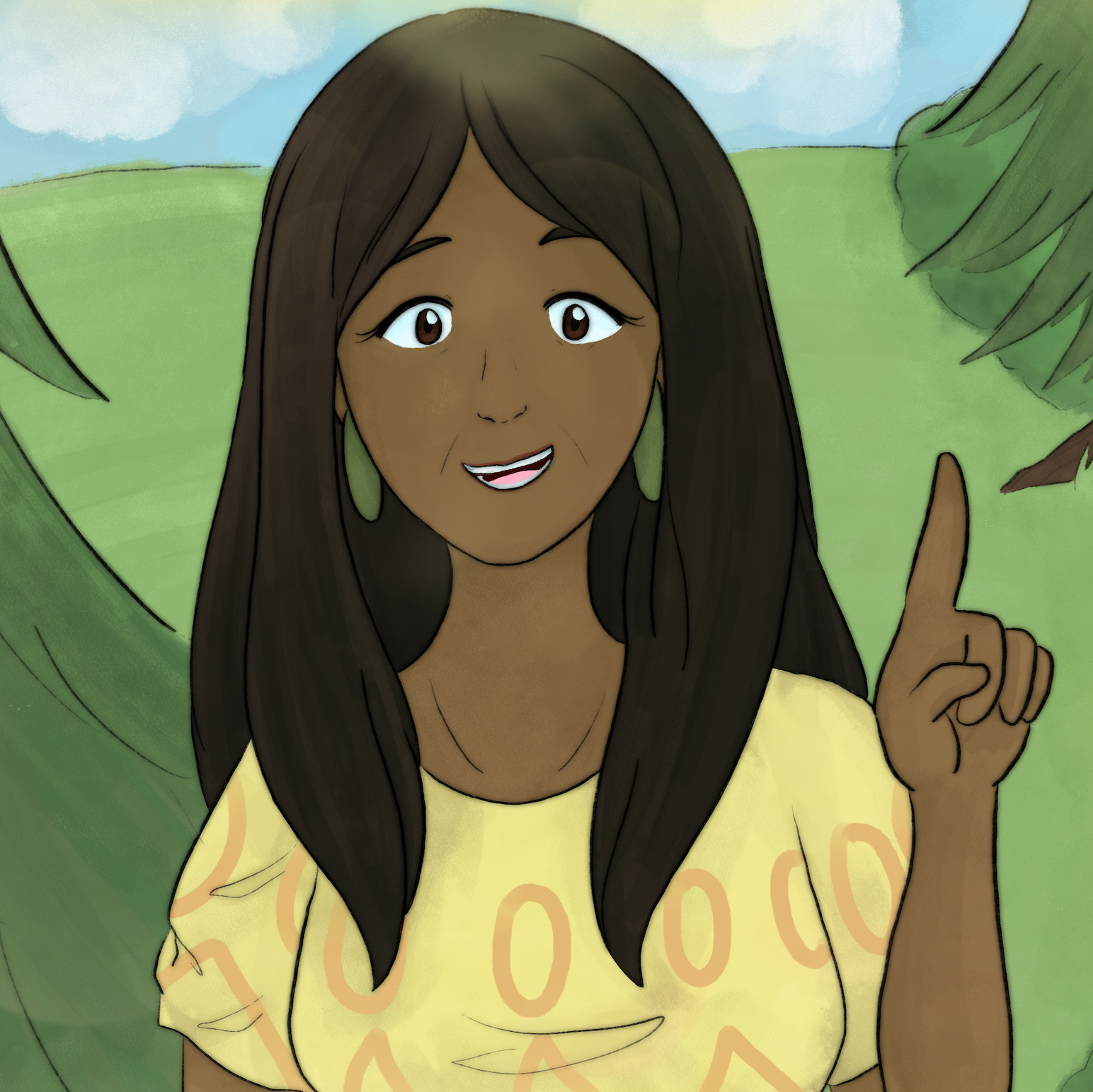
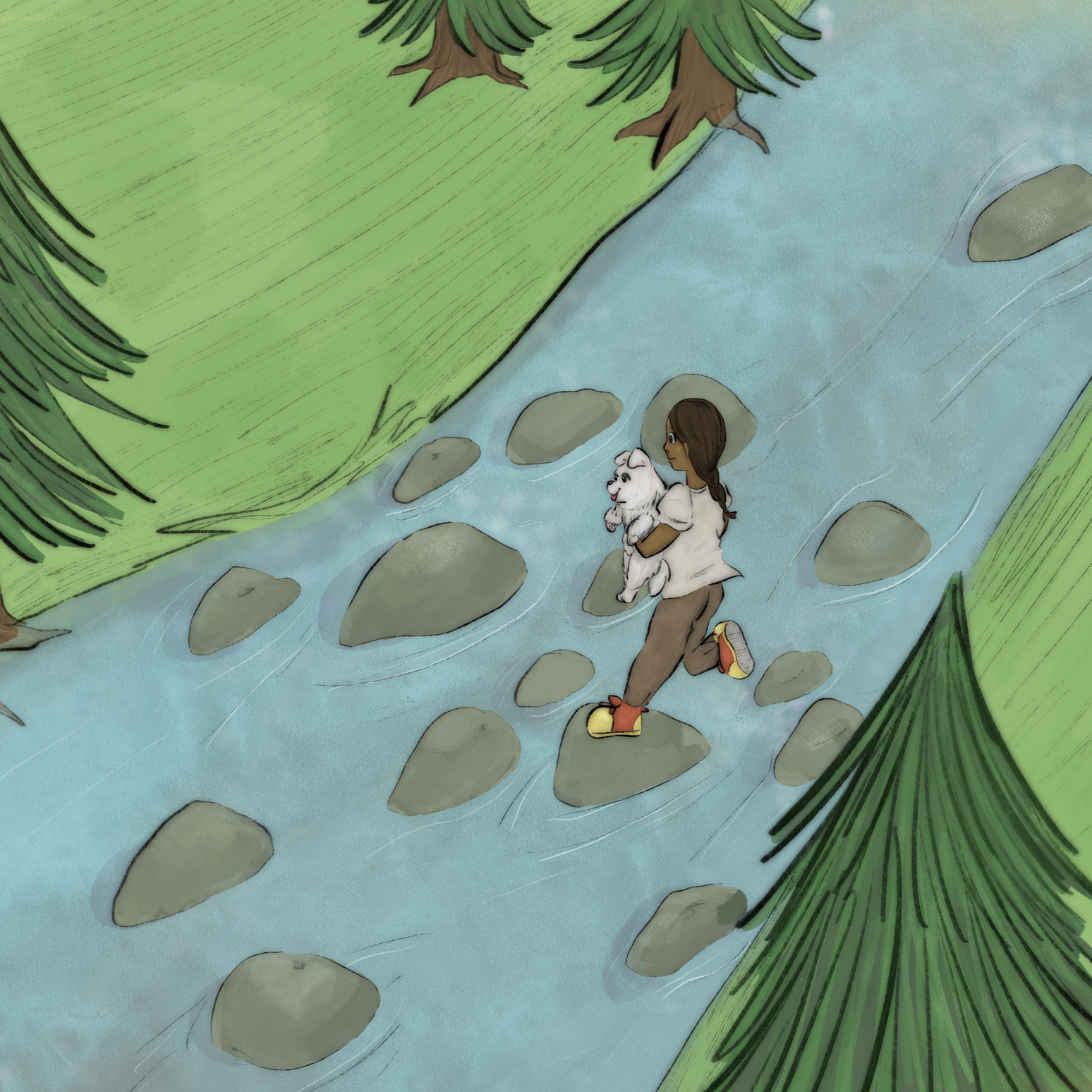
Opening scene: Shapes of the mountains; the shape of the creek; perspective (size of the people in the front and size of the house in the back), Small Number’s height; Mom’s height
0:46 - Shape of the tree branches; Mom’s finger points up
1:13 - Rocks - shape, size, how many; are they close/far to each other; which path will you pick?
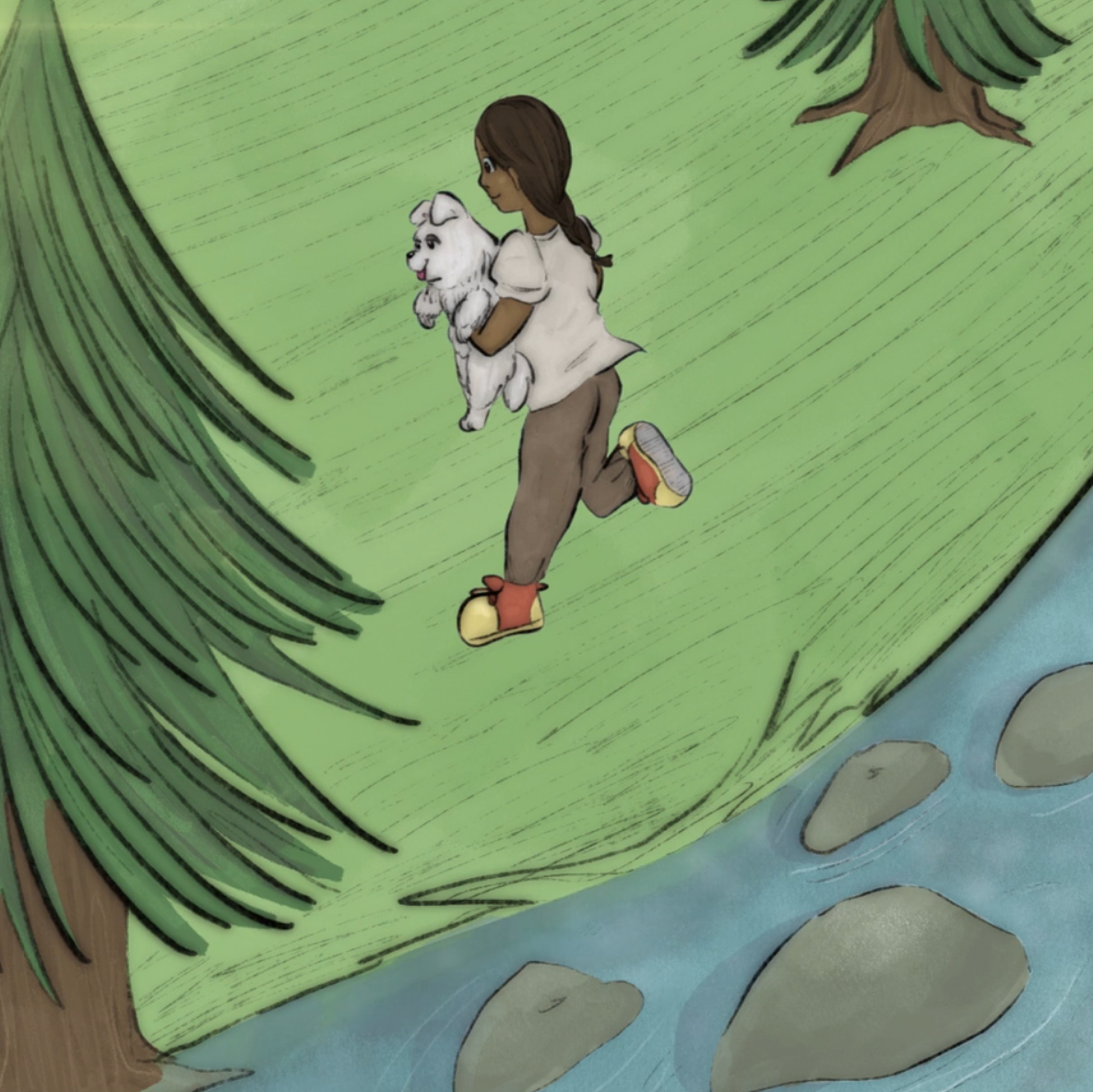
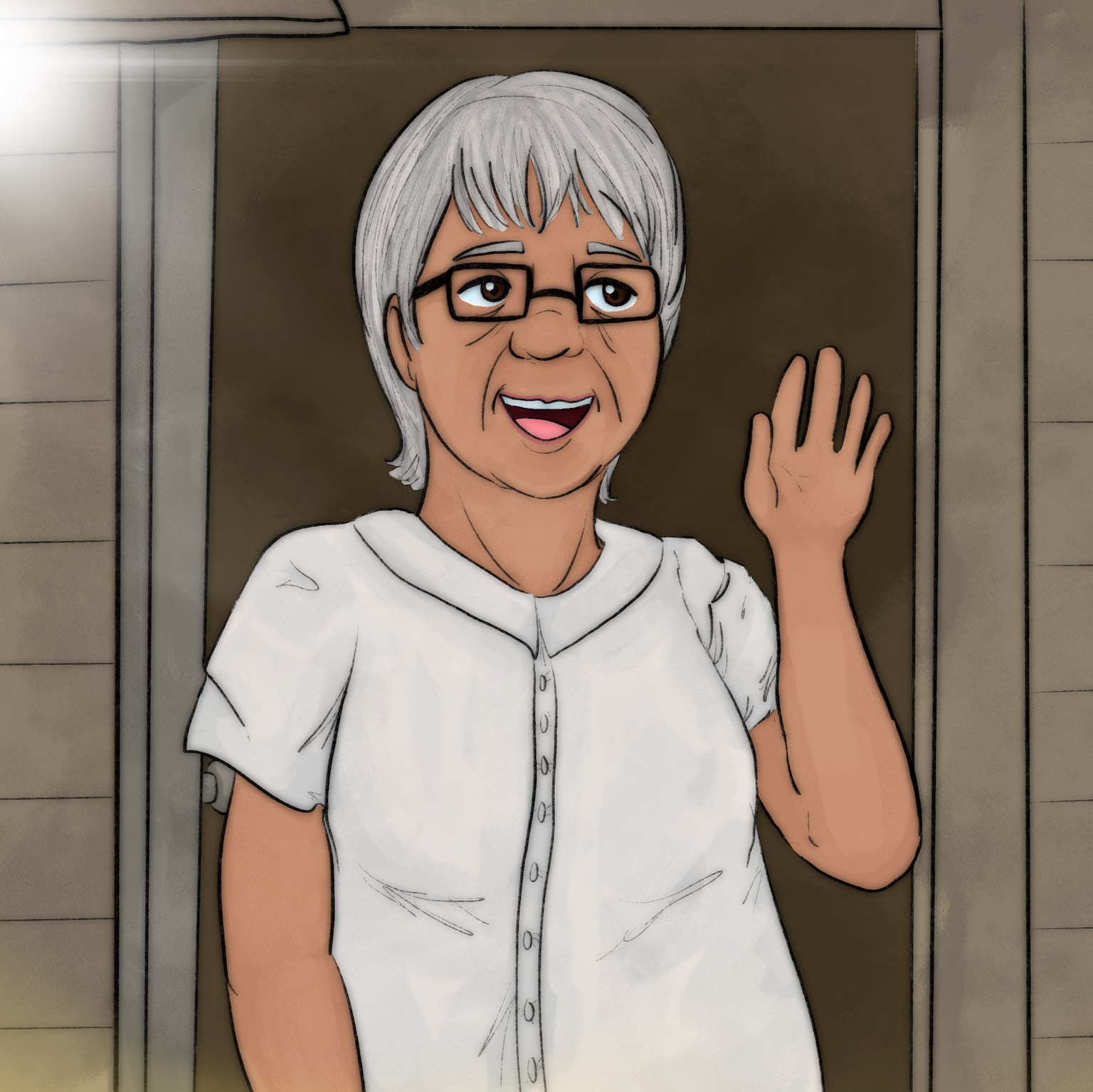
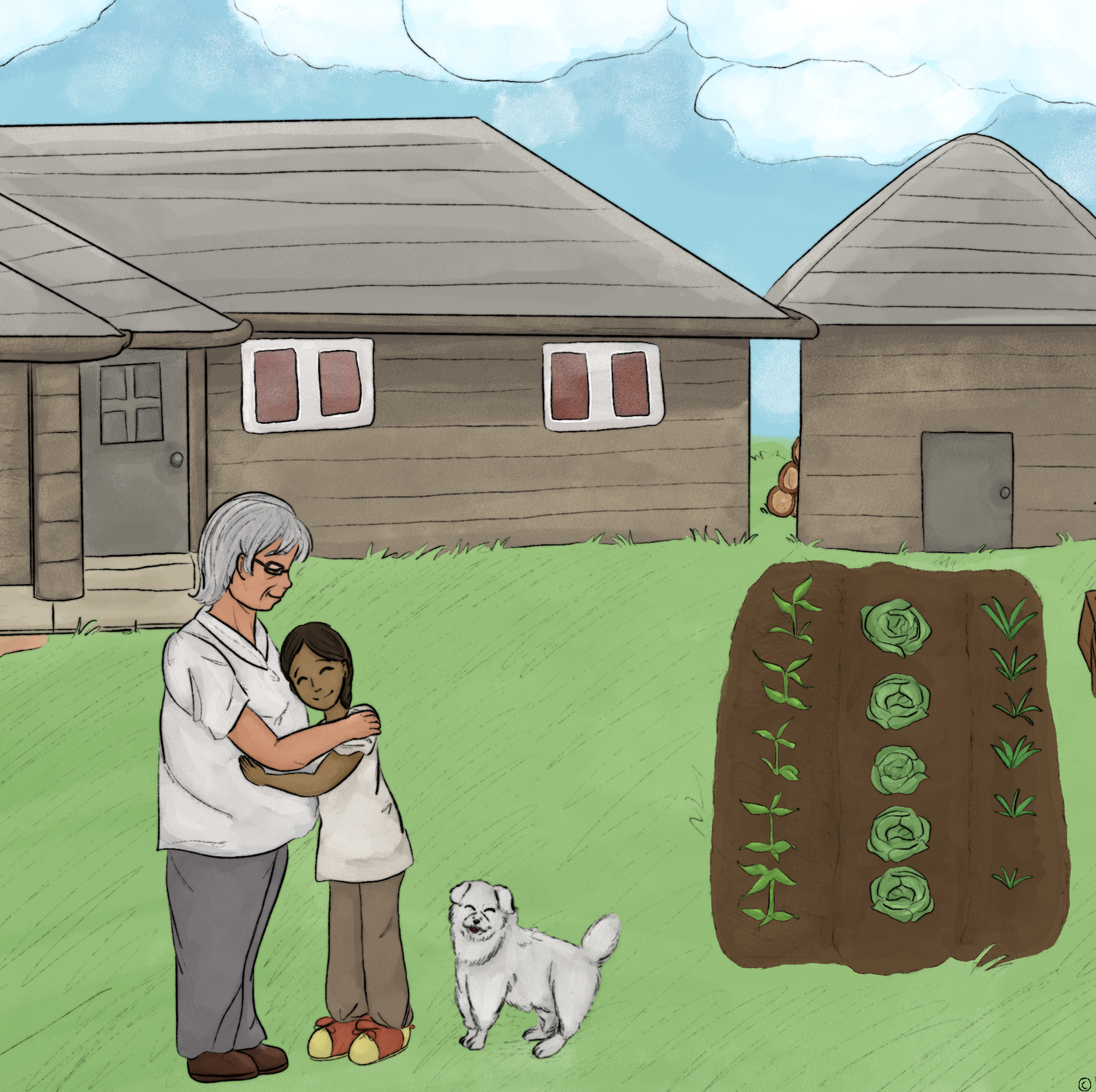
1:27 - “On the other side”, is the ground flat? Is it sloped? If yes, does it look steep?
1:35 - Shapes on the door and the sidings; shape of Grandma’s glasses
1:41 - Shape of the roof? How many roof tops? Shape of the garden? How many rows of vegetables? How many kinds of vegetables? What is the shape of a head of cabbage? How many heads of cabbage do you see?
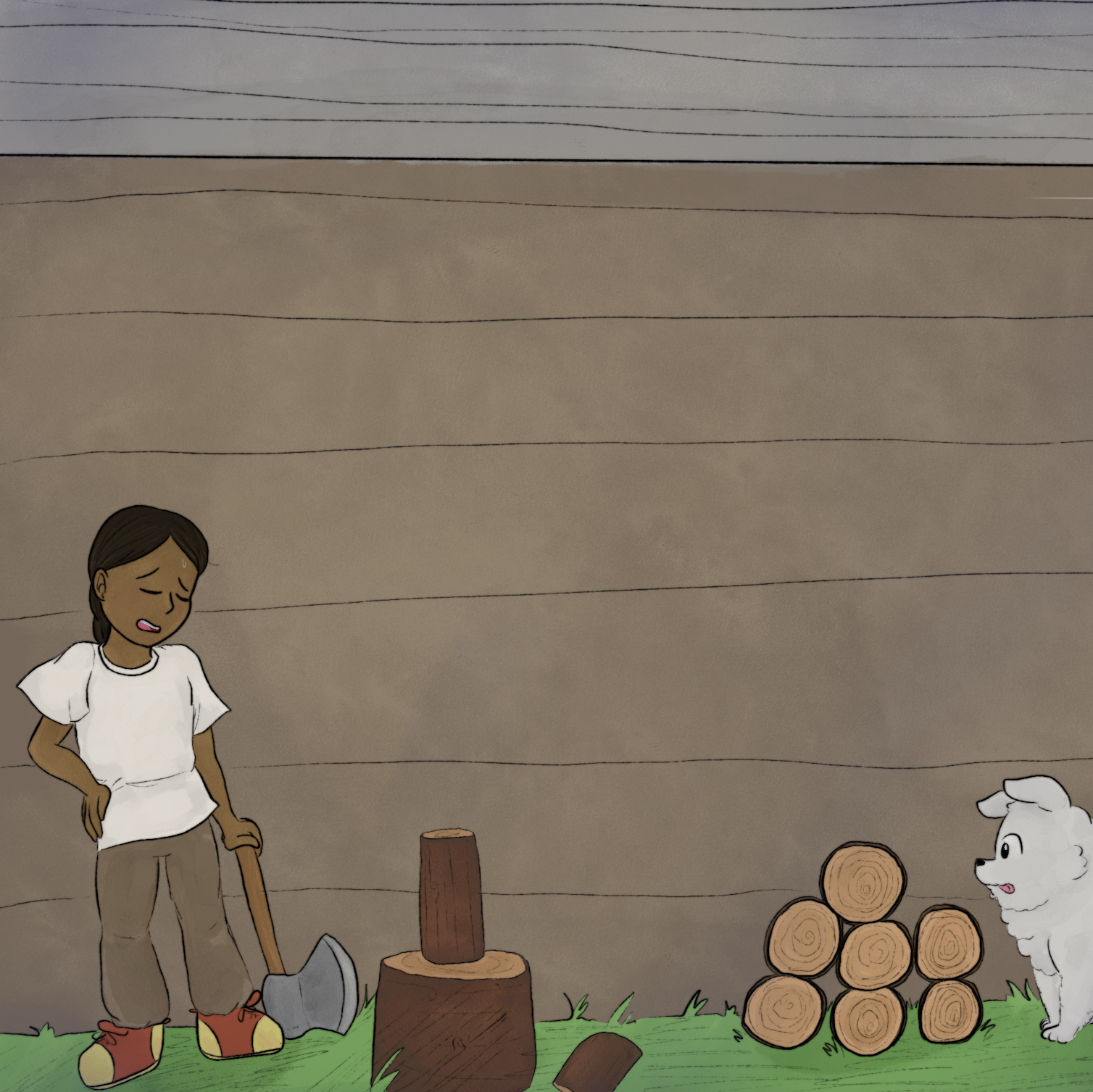
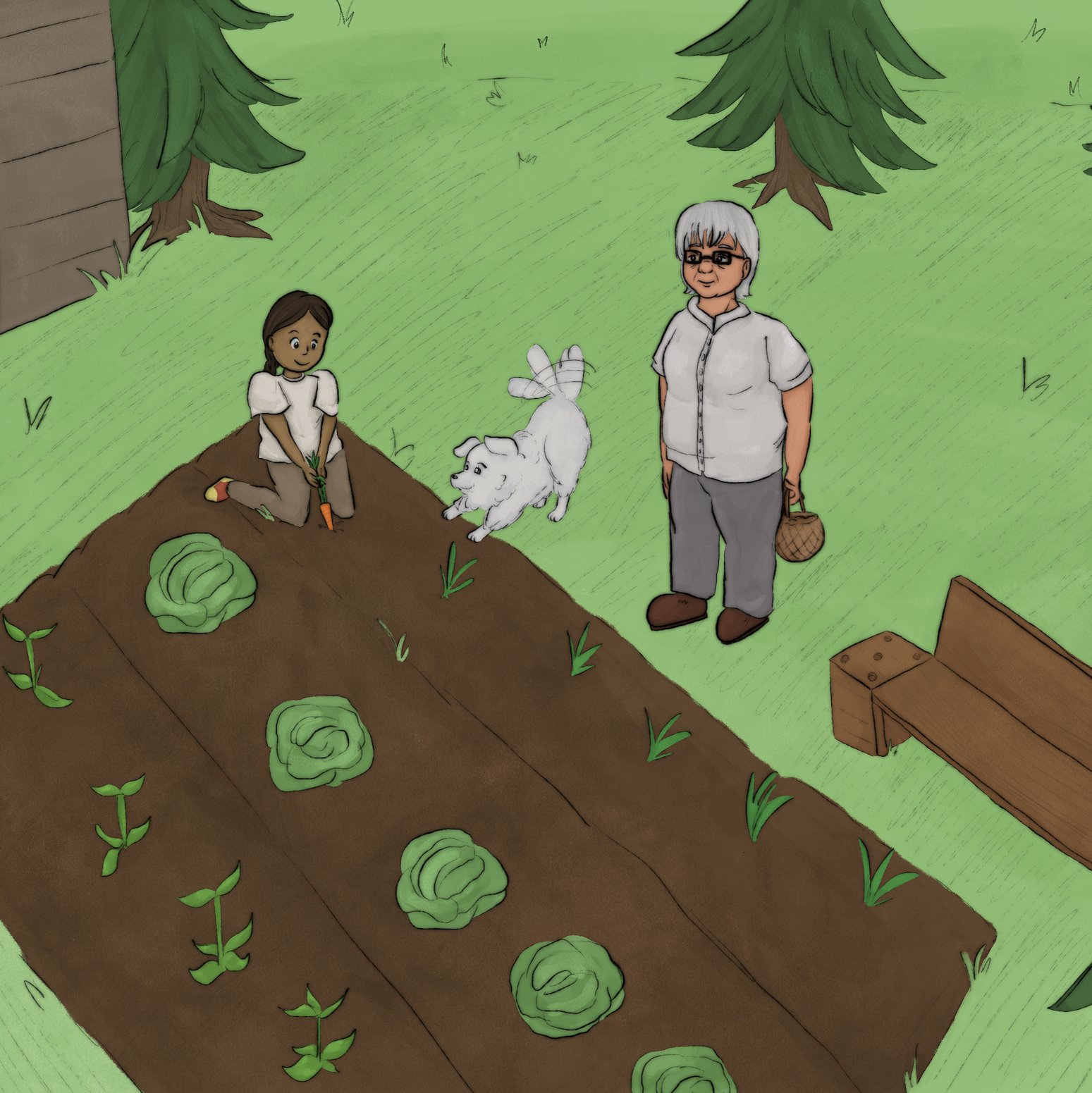
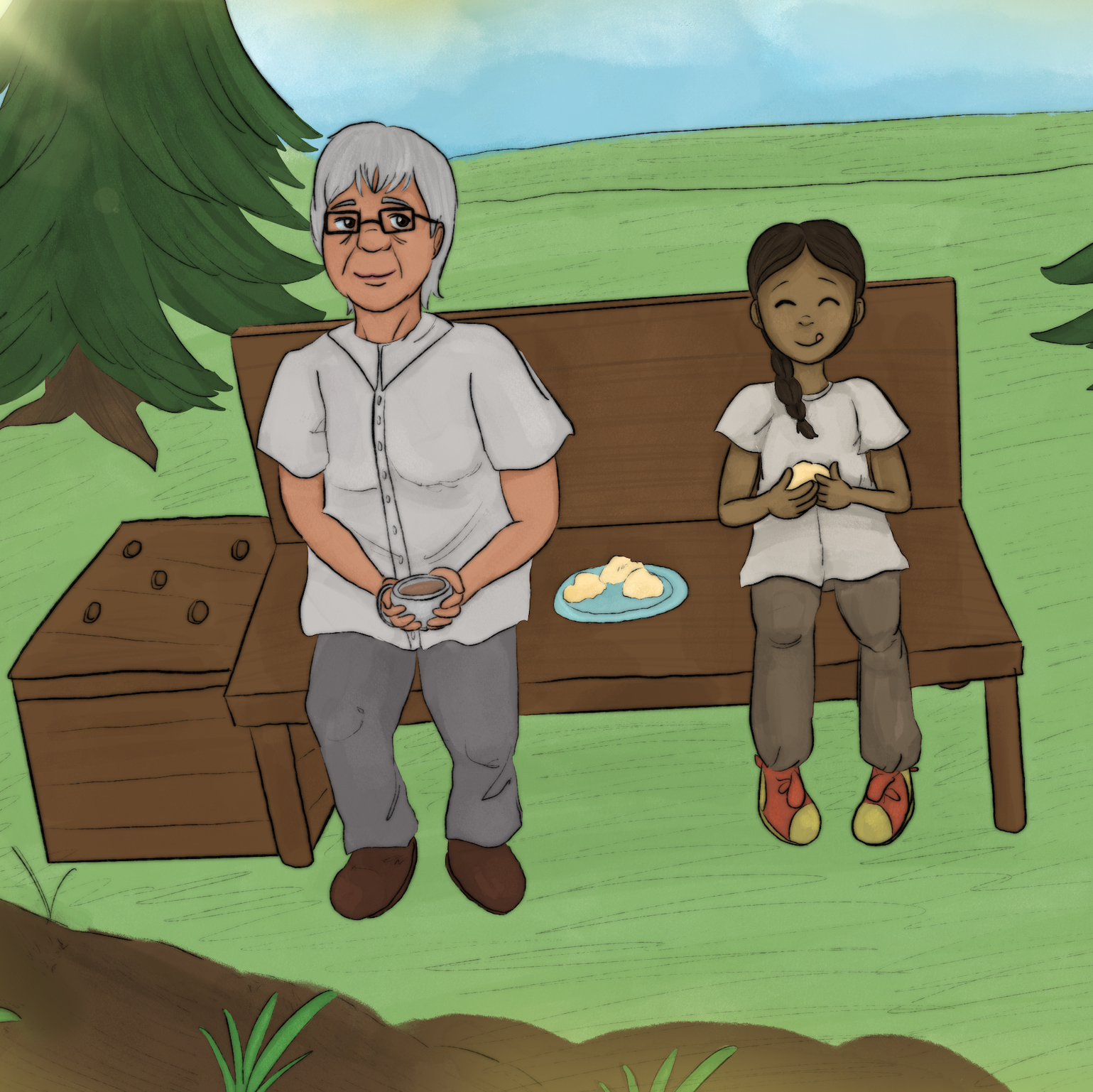
1:52 - What is the shape of the chopped wood? Estimate the number of wood pieces. The shape of the stack? If you were Small Number, would you build a stack of the same shape? Why did Small Number decide to put a small piece of wood on the top of a very large piece of wood?
2:02 - What is the shape of a carrot? What is the shape of the bench? What is the shape of the box? Do you see any parallel lines?
2:28 - What is the pattern of the holes on the lid of the box? Would you make a different pattern? What is the purpose of the holes? What is the shape of the plate? Why did Bethani draw the plate to look more like an oval than a circle?
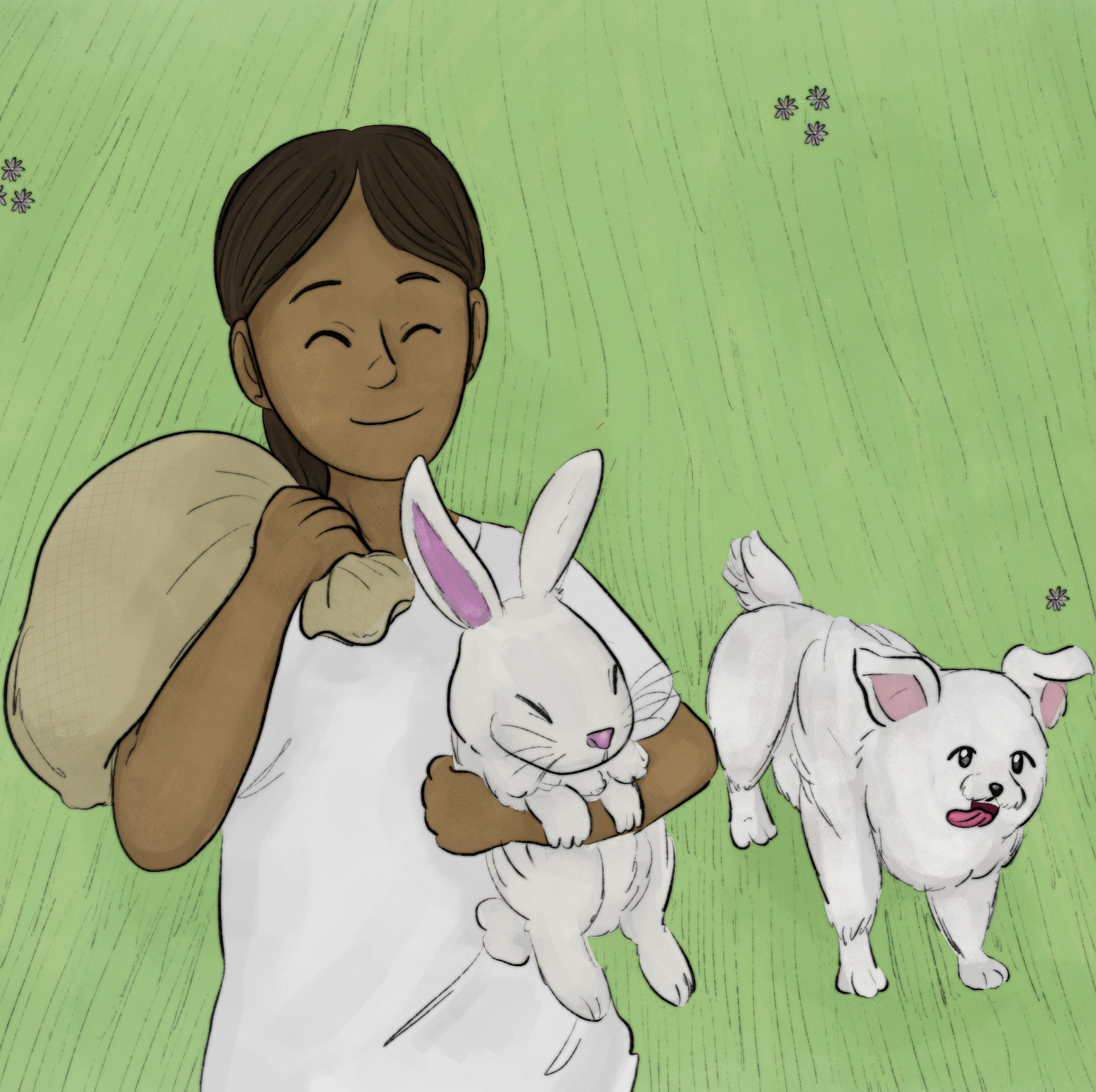
3:24 - How would you describe the shape of the sack? Did you notice any flowers in this scene? Have you noticed a pattern in this scene? Have you noticed a similar pattern earlier in the film? Is it possible to arrange different kinds of objects in the same pattern? Can you think about an example?
All: How did you like the sound of drumming in the film? Can you repeat the pattern that the drummer was making?
Subsection 11.1.5 Answer: How can Small Number safely get everything across the river?
Small Number thinks:
“If I take the carrots, the dog will chase the rabbit. If I take the dog, the rabbit will eat the carrots. So, I will take the rabbit across.”Small Number carries the rabbit across the river, jumping from rock to rock, and puts it down on the other side. He crosses back. Small Number says:
“Curly Hair, stay here. I’m am going to take the carrots across.”He jumps from rock to rock and gets to the other side of the river. He puts the carrots down, and here comes the rabbit.
“Oh no you don’t!” Small Number tells the rabbit.He picks him up and carries him back across the river. When he gets to the other side, he sets the rabbit down and picks up the little dog. He crosses over with the little dog and sets him down next to the carrots.
“Good thing you don’t like carrots, Curly Hair!”He takes one carrot with him and crosses back to the other side.
“Little Rabbit! Little Rabbit!” he says holding out the carrot.He grabs the rabbit and carries it to the other side.
“Way to go!” he thinks to himself.He has managed to bring everything across the river. He heads home carrying the rabbit and the carrots, and Curly Hair runs ahead, happy to be going home.
Subsection 11.1.6 Discussion/Activities
Exercise 11.1.1. Grades 2-3.
Students should play the solution out in the class or outside of the class. Discuss the question with the whole class to make sure that students understand the rules. If possible divide the class in a few groups. In each group ask for volunteers who would be willing to act as Small Number, the dog, and the rabbit. Someone’s backpack could be used as the sack of carrots. Divide the space by a piece of rope, a line, or in any other way. Ask other students to suggest what Small Number needs to do next. Allow “trial and error” moves and discuss their outcomes. You may wish to search for “river crossing puzzles” and find a similar puzzle to challenge your students.
Exercise 11.1.2. Grades 4-6.
Discuss the question with the whole class to make sure that students understand the rules. Divide the class in pairs and ask each pair to come up with the solution. Encourage students to write down their solutions as a sequence of steps. After 15 minutes invite students to share their solutions. After the first group explains their solution, ask if any other group found a different solution? If yes, invite this group. (The message here is that the same problem can have multiple solutions.) Did the second solution have the same number of steps/crossings of the creek as the first solution? More solutions? The minimum number of steps? At the end of the class invite students to look on the web for similar puzzles. Suggest searching for “river crossing puzzles”. Ask students to bring a puzzle that they were able to solve (or to understand the solution) to the class and share with their peers.
Exercise 11.1.3. General.
Ask students to pay attention to the mathematics (words, geometrical shapes, patterns, numbers - including counting and estimating). Ask students to pay attention to the cultural, particularly Indigenous, aspects of the story. Ask students if they have ever been asked to help their grandparents, and if yes to share their story.
Subsection 11.1.7 Challenge
When Small Number came back home, he told his mom how he safely got the dog, the rabbit, and the sack of carrots across the river. “That was very cleaver, Small Number!” Then Small Number’s Mom paused thinking. “That reminds me about a story that my Grandma told when I was just a little bit older than you are now. Let me see if you can solve this!”
A long, long, time ago there were two nations, the Nation of Warriors and the Nation of Negotiators. Once upon a time, three Warriors and three Negotiators needed to cross the river. To do so, they had to share a small canoe that could carry at most two people. The Negotiators were worried: “I don’t think that it would be wise if at any point the Warriors outnumber us.” They all agreed: “We have to make sure that there is always the same number of us as the Warriors, or that we outnumber them. What do we do?”

Small Number’s Mom smiled: “Can you help the Negotiators to safely cross the river, my dear son?”
